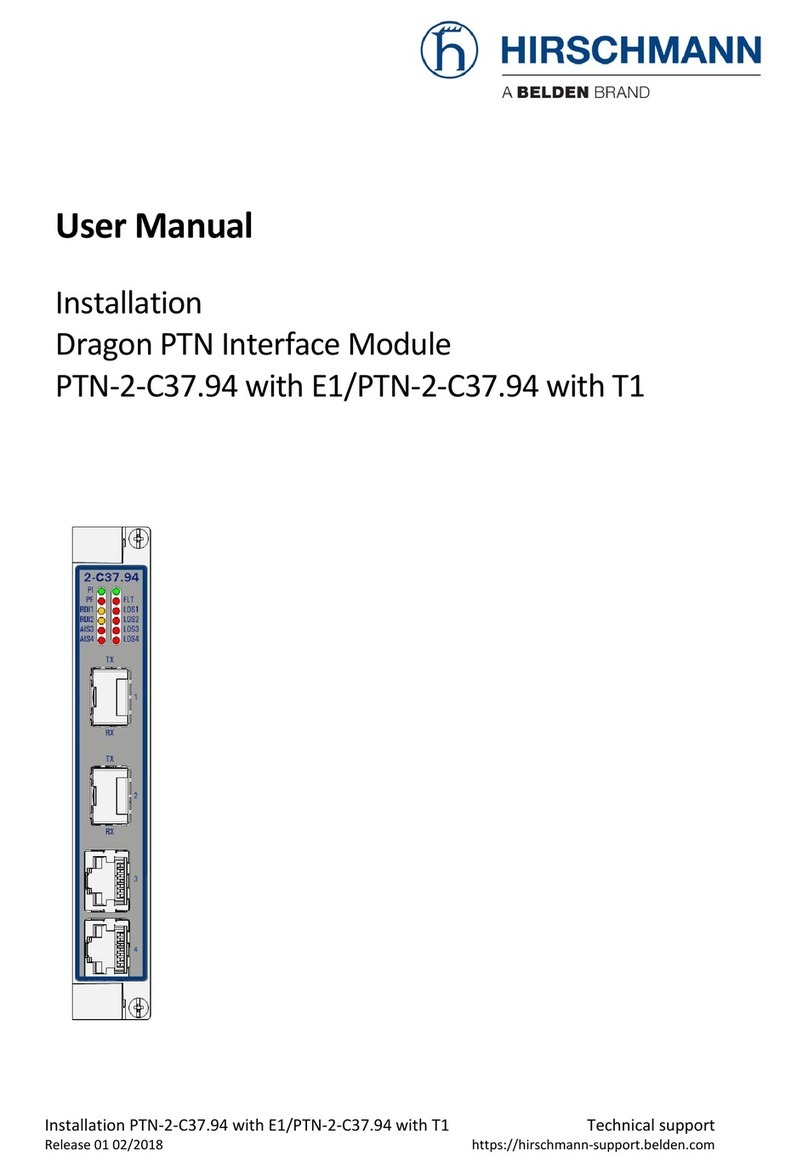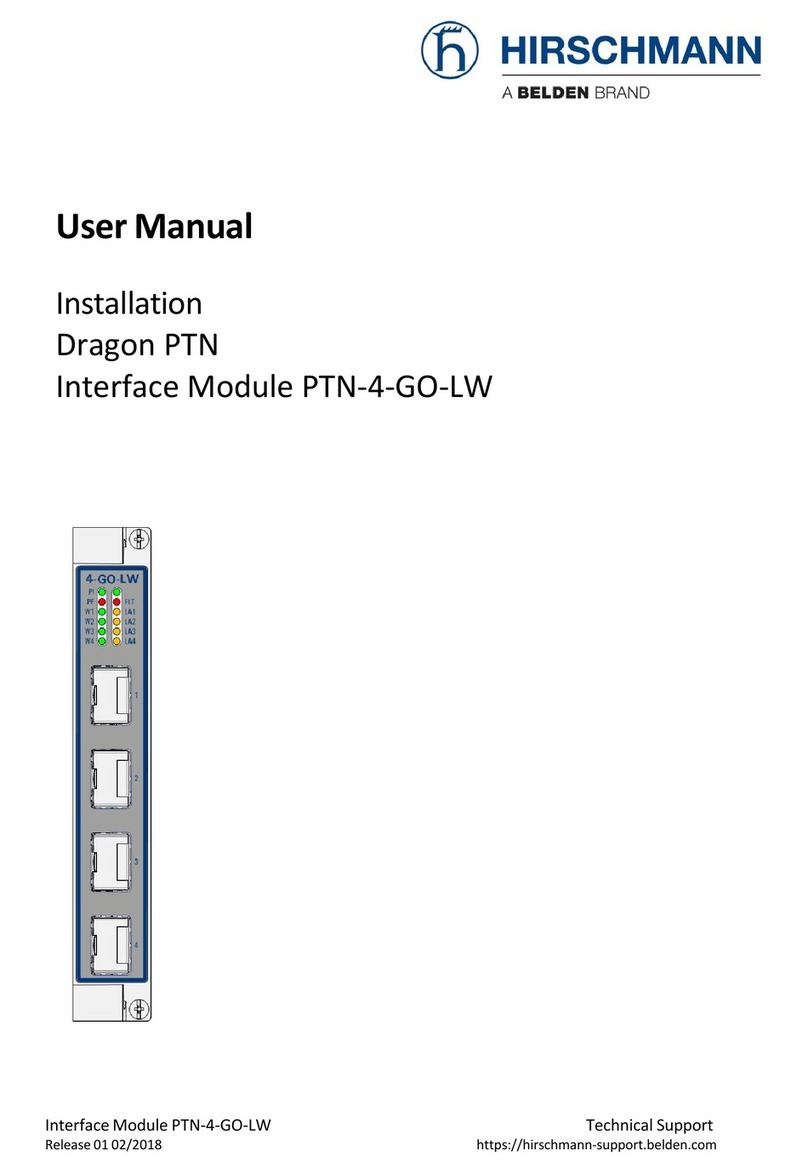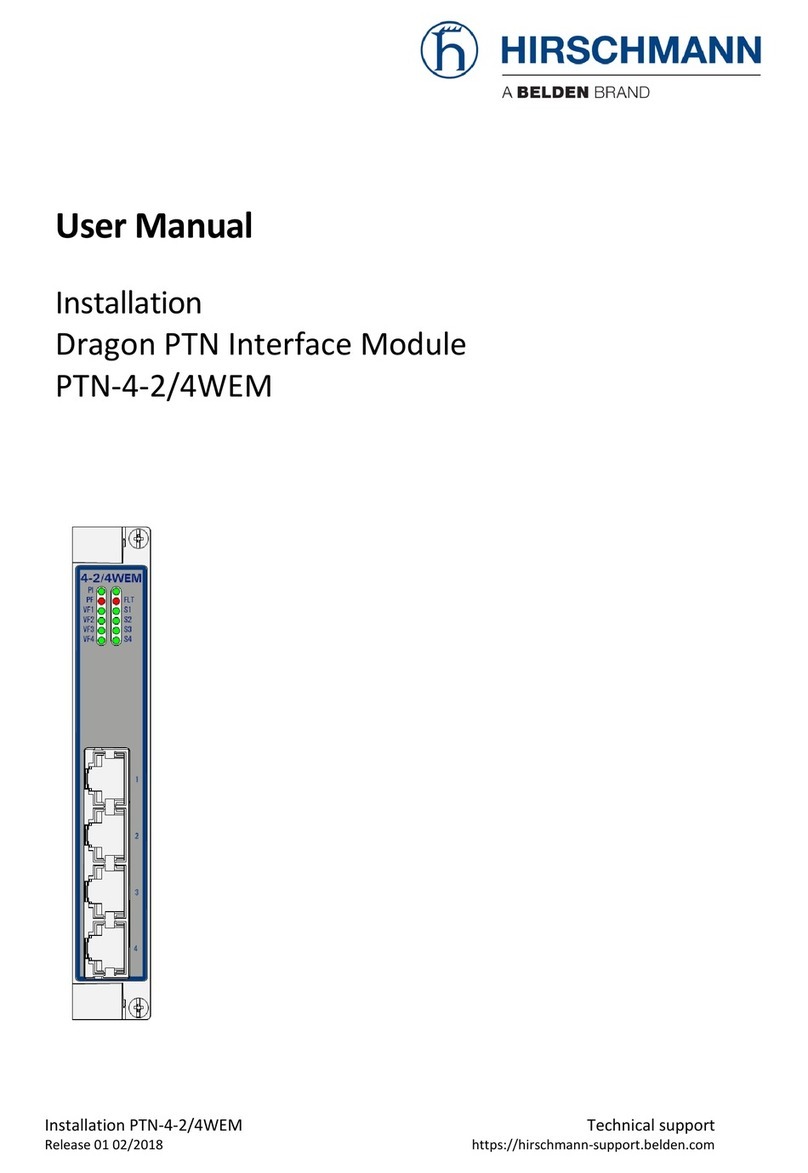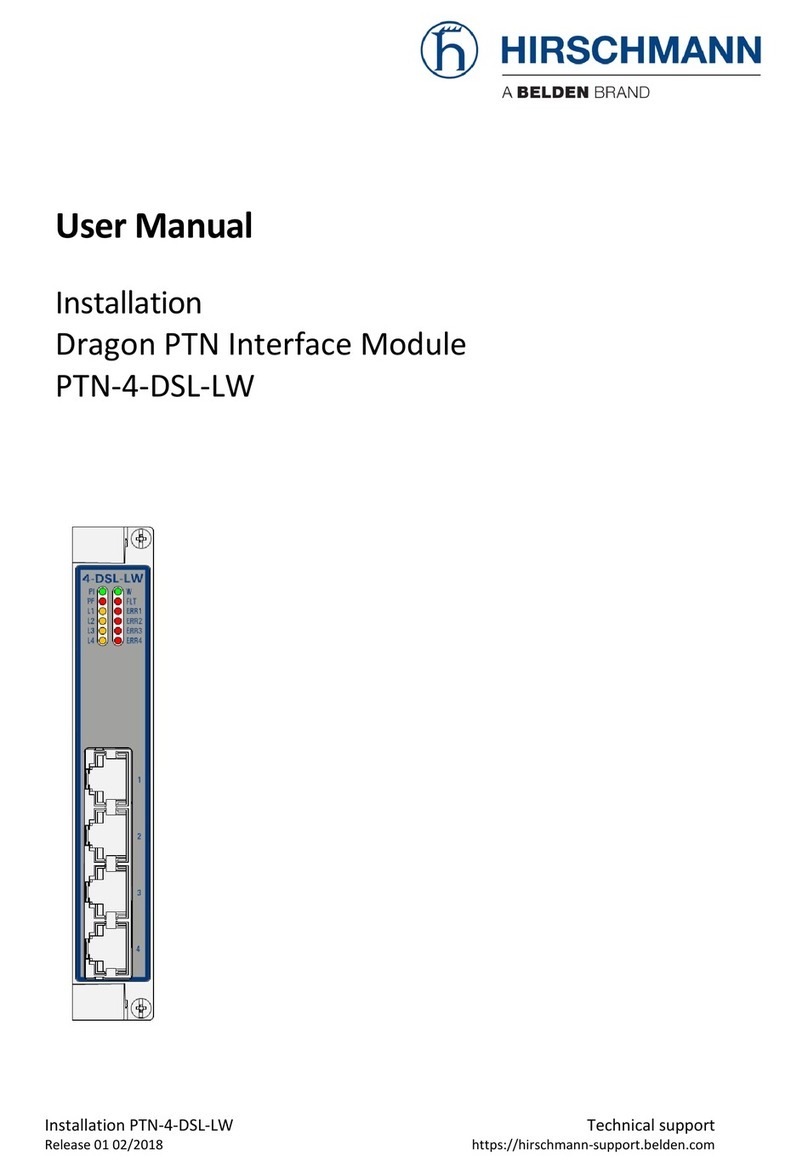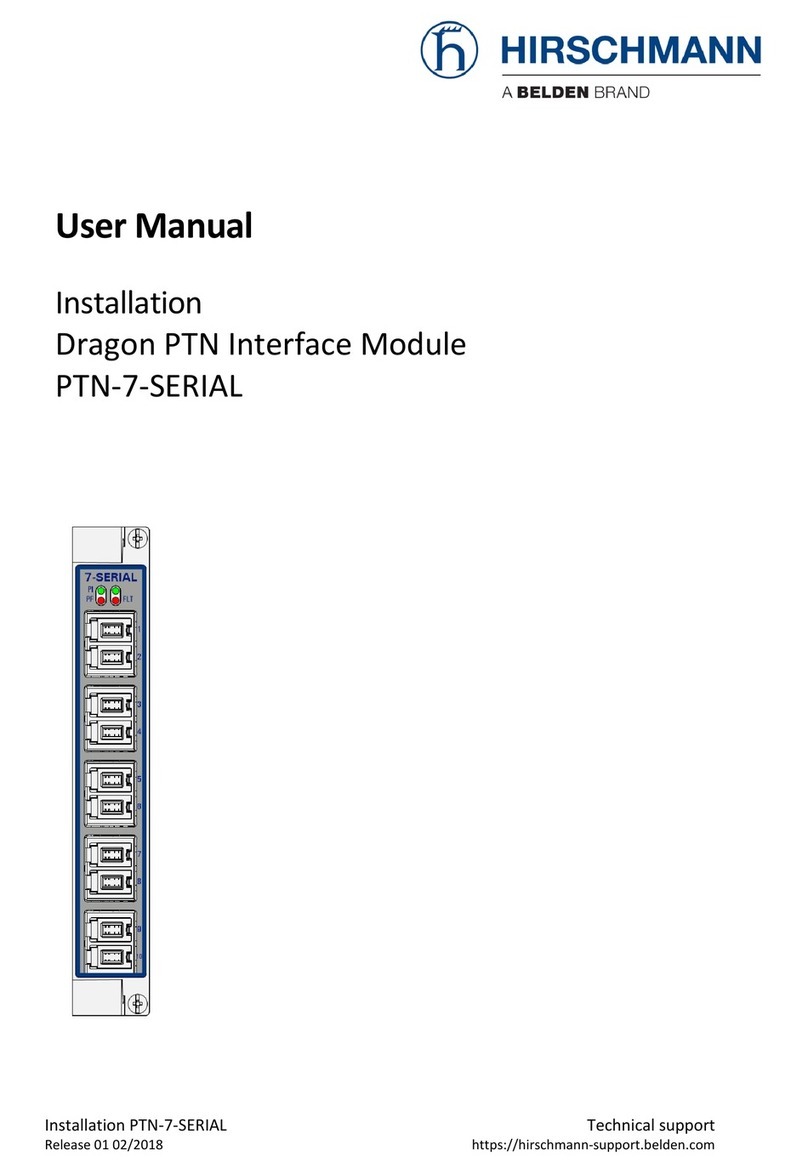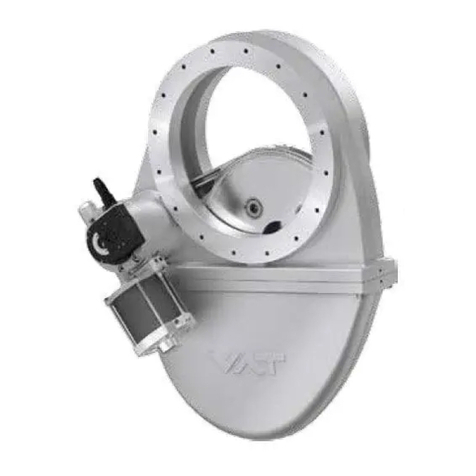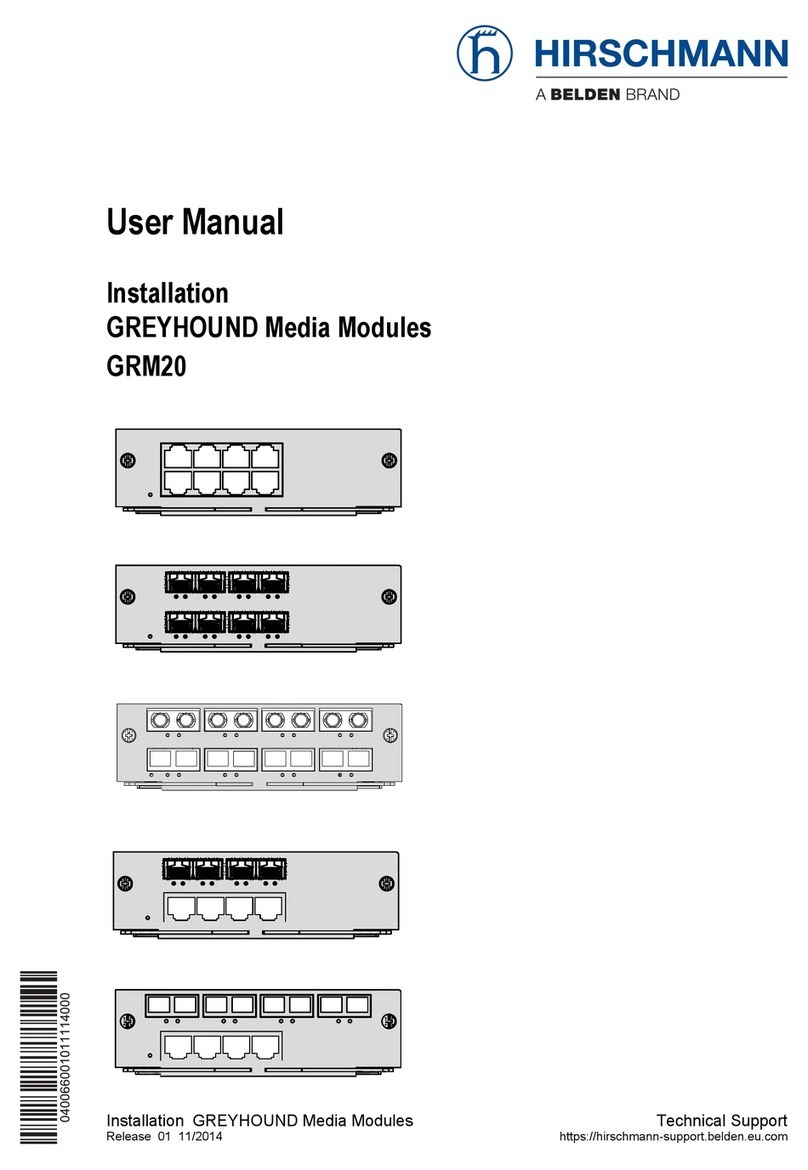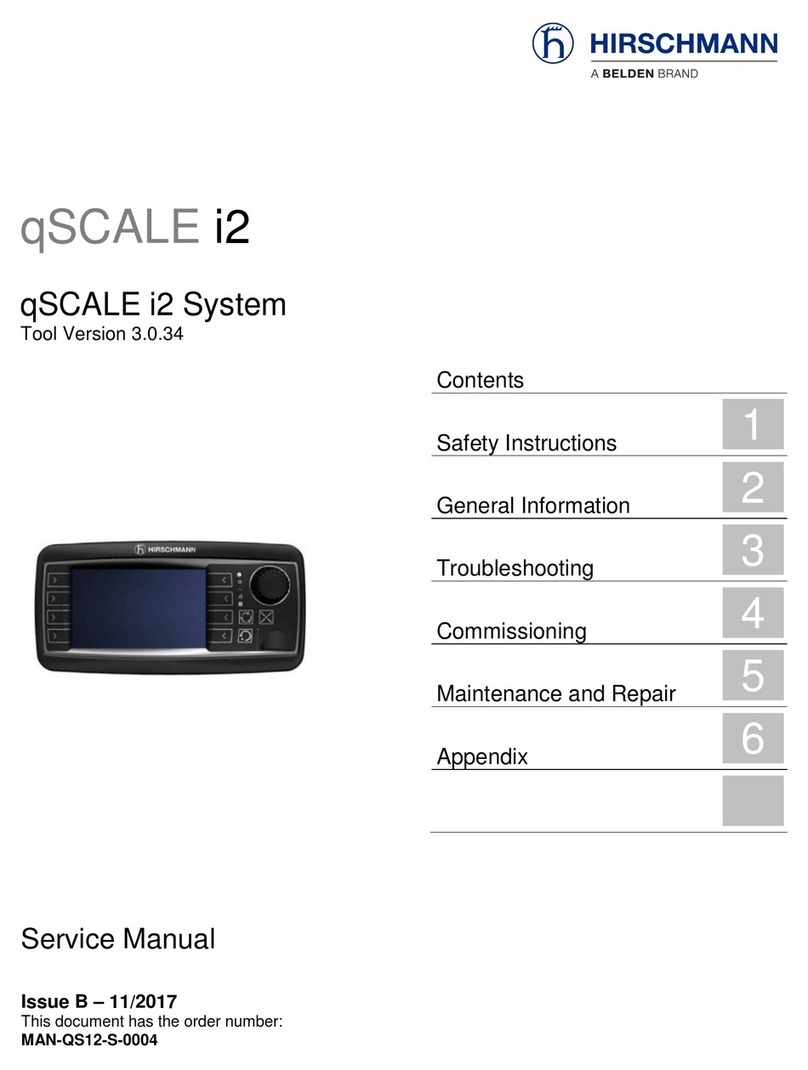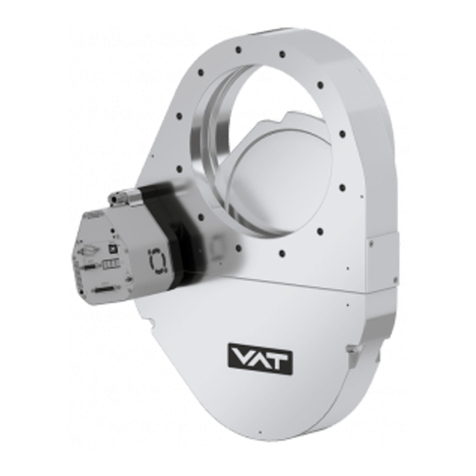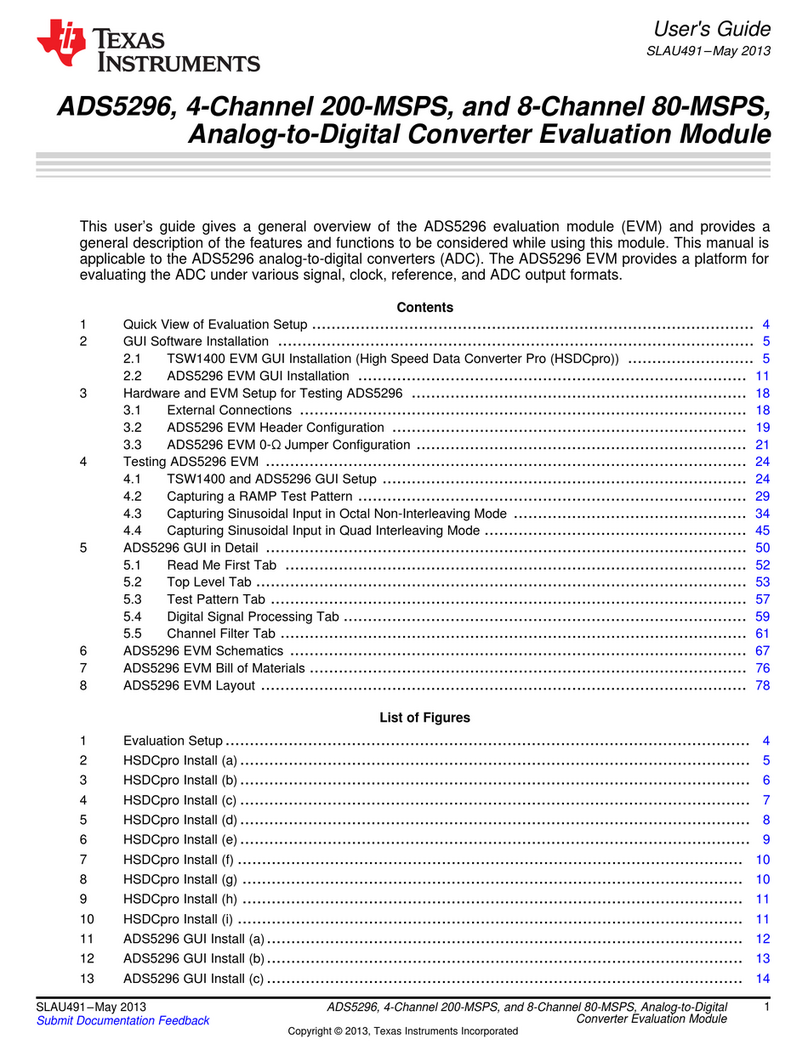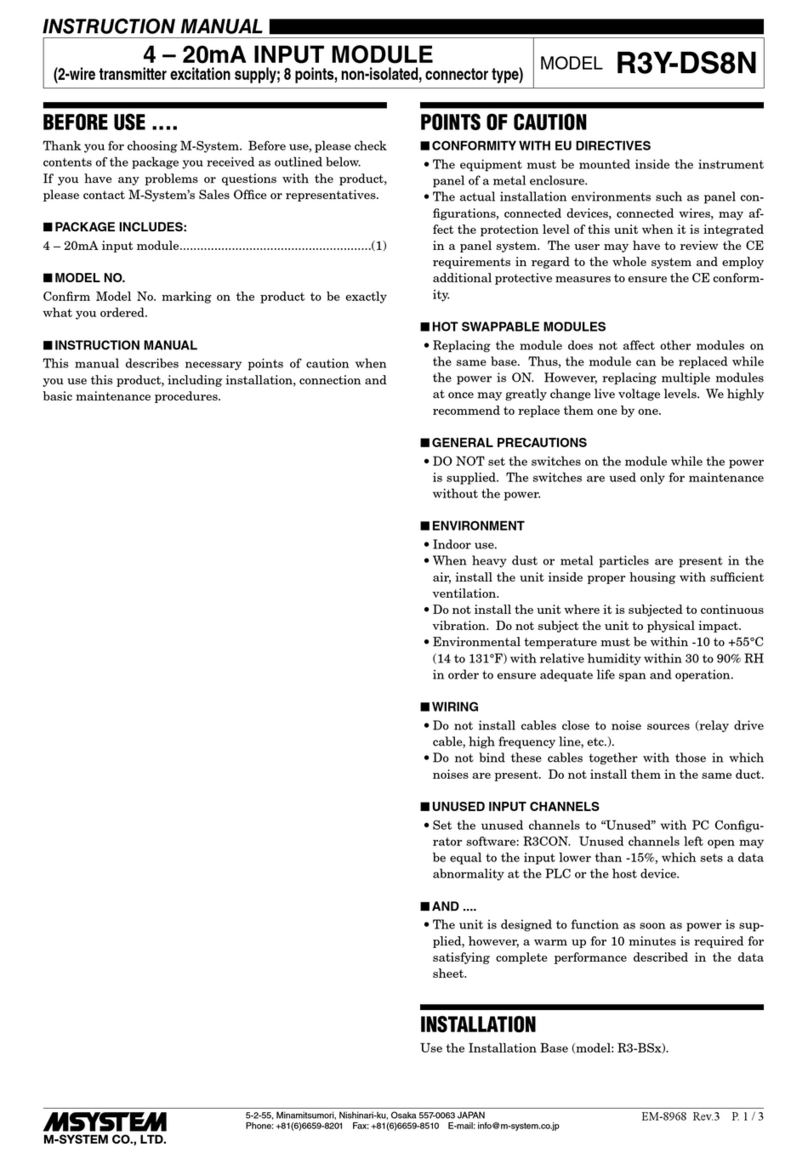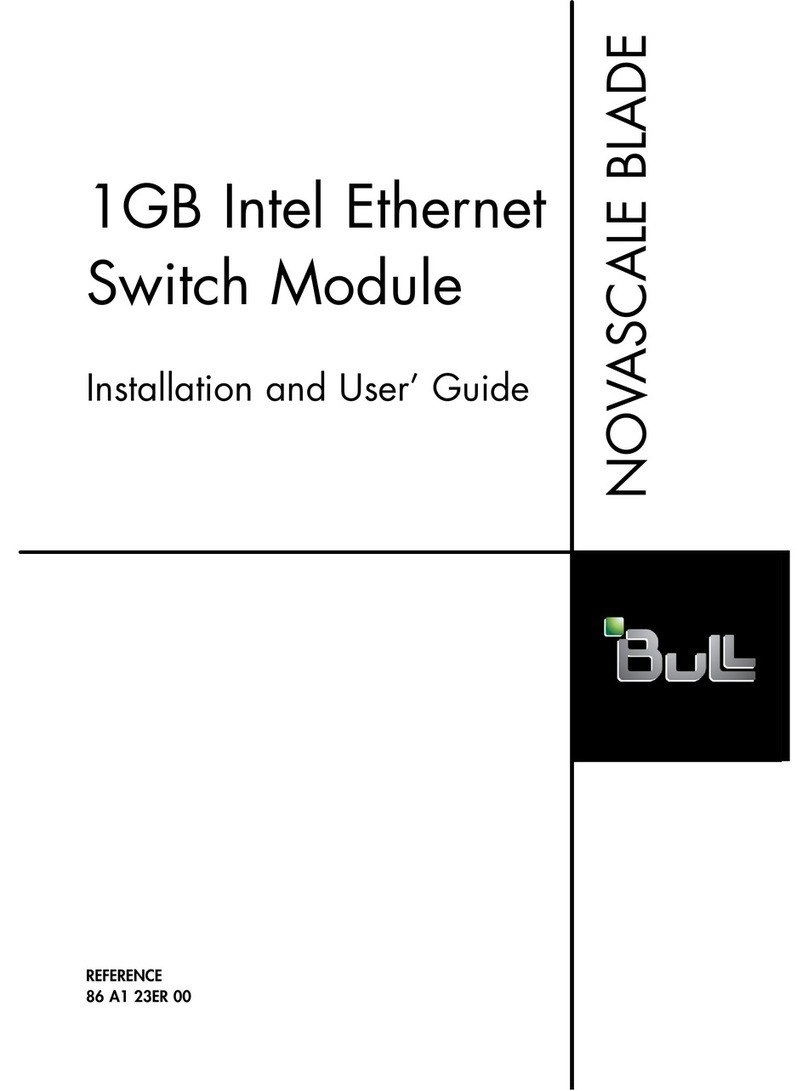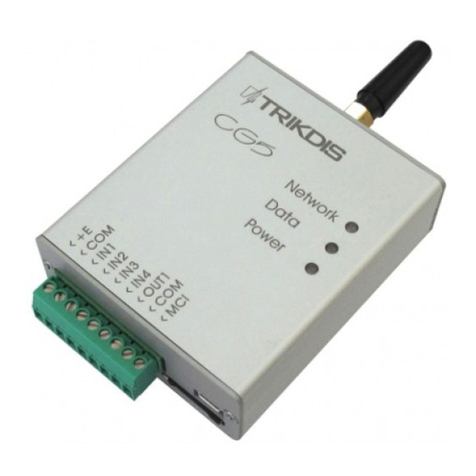Installation PTN-9-L3A-L 11
Release 01 02/2018
VLAN based/VLAN ID: Use this mode if each VLAN (ID) on a port must have its own
service. Ethernet packets with the configured VLAN ID will be forwarded in this service,
other VLAN IDs and untagged packets will be dropped. This behavior can be overruled by
a more advanced VLAN processing in the ‘VLAN Tagging/Untagging’ feature in
HiProvision. This feature also supports VLAN translation which replaces VLAN ID ‘x’ into
VLAN ID ‘y’.
c. VLAN Based Local Service
A VLAN Based Local service is a VLAN based service between only LAN front ports on 9-L3A-L
IFMs. Does not use back end ports, tunnels, WAN ports, the Dragon PTN network and as a
result, this service does not consume network bandwidth.
d. Configuration
See Ref. [1] in Table 2 for more configuration information in HiProvision.
2.2.4 Layer2: VLAN handling
Both port based and VLAN based Ethernet services are supported in which VLANs can be
handled (tagging/untagging behavior, Qos, ...). See Ref. [1] in Table 2 for more configuration
information in HiProvision.
2.2.5 Layer2: QoS (=Quality of Service)
Each Ethernet service can be assigned its own quality of service (bandwidth, priority,
burstsize). See Ref. [1] in Table 2 for more configuration information in HiProvision.
2.2.6 Layer2: MSTP (=Multiple Spanning Tree)
MSTP originally defined in IEEE 802.1s and later merged into IEEE 802.1Q-2003, defines an
extension to RSTP to further develop the usefulness of VLANs. This MSTP instance configures
a separate Spanning Tree for all VLANs included in this instance and blocks all but one of the
possible alternate paths within each Spanning Tree.
If there is only one VLAN in the network, single (traditional) STP works appropriately. If the
network contains more than one VLAN, the logical network configured by single STP would
work, but it is possible to make better use of the alternate paths available by using an
alternate spanning tree for different VLANs or groups of VLANs. More than one VLAN can be
assigned to one MST instance. Multiple MST regions can be operational, each having its own
MSTP instances. The IST (MSTP) instance monitors the entire Region, the CST (MSTP)
instance monitors the links between the regions.
MSTP in a port based service is supported network wide whereas MSTP in a VLAN based
service is supported only locally (not over the 9-L3A-L back end ports). CAUTION: using a
VLAN based service with MSTP over the back end ports could cause loops!
MSTP is fully supported on 9-L3A-L IFMs. On 9-L3A-L IFMs, there is always a default MSTP
running even if no MSTP is configured in HiProvision. See Ref. [1] in Table 2 for more
configuration information in HiProvision.



















